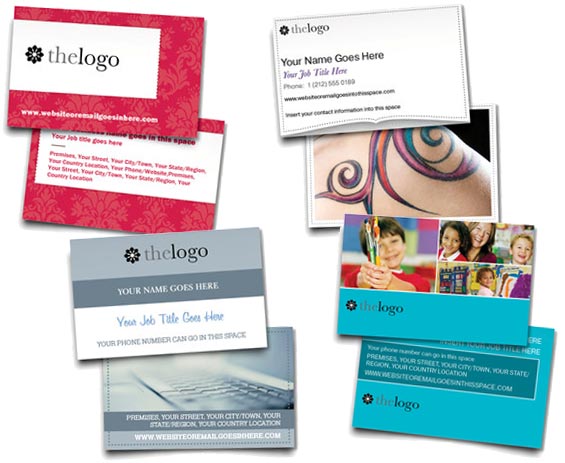The Art Of Impression: Exploring The Design Of Visiting Cards
The Art of Impression: Exploring the Design of Visiting Cards
Related Articles: The Art of Impression: Exploring the Design of Visiting Cards
Introduction
In this auspicious occasion, we are delighted to delve into the intriguing topic related to The Art of Impression: Exploring the Design of Visiting Cards. Let’s weave interesting information and offer fresh perspectives to the readers.
Table of Content
The Art of Impression: Exploring the Design of Visiting Cards

In the contemporary business landscape, where first impressions are paramount, the humble visiting card transcends its simple function as a means of contact. It becomes a microcosm of brand identity, a powerful tool for conveying professionalism, personality, and a compelling narrative. The design of a visiting card, often overlooked, plays a pivotal role in shaping perceptions and influencing lasting impressions. This article delves into the intricacies of visiting card interior design, exploring its significance and offering insights into crafting impactful and memorable designs.
Understanding the Essence of Interior Design in Visiting Cards
The term "interior design" might seem incongruous when applied to a small, rectangular piece of paper. However, it is a fitting analogy, as it encapsulates the meticulous attention to detail and strategic use of elements that go beyond mere aesthetics. Interior design, in the context of visiting cards, encompasses the thoughtful placement and arrangement of textual information, visual elements, and overall layout to create a cohesive and impactful message.
The Importance of Interior Design in Visiting Cards
A well-designed visiting card transcends mere functionality. It serves as a miniature marketing tool, leaving a lasting impression on potential clients, collaborators, and business partners. Effective interior design achieves the following:
- Enhanced Brand Identity: A consistent and visually appealing design reinforces brand recognition and strengthens brand recall.
- Clear Communication: Strategic placement of information ensures key details, such as name, title, contact information, and website address, are easily accessible and digestible.
- Professionalism and Credibility: A well-crafted card exudes professionalism and attention to detail, conveying a sense of competence and trustworthiness.
- Memorable Impression: Unique design elements, such as color palettes, typography, and imagery, can create a lasting impression and set a business apart from competitors.
- Strategic Marketing: The back of a visiting card can be leveraged for promotional messages, special offers, or QR codes, allowing for a more comprehensive marketing approach.
Key Elements of Visiting Card Interior Design
Several key elements contribute to the overall impact of a visiting card’s interior design:
- Typography: The choice of font plays a crucial role in conveying brand personality and readability. Serif fonts are often associated with tradition and formality, while sans-serif fonts convey a sense of modernity and simplicity.
- Color Palette: The selection of colors should align with brand identity and evoke specific emotions or associations. It is essential to consider color psychology and cultural implications when choosing a color scheme.
- Layout and Composition: The arrangement of text, images, and other elements influences visual hierarchy and readability. A balanced and well-organized layout ensures key information is easily accessible and visually appealing.
- Visual Elements: Images, logos, patterns, and textures can add visual interest and enhance brand recognition. These elements should be carefully selected to align with the overall message and brand identity.
- Paper Quality and Texture: The choice of paper stock significantly impacts the overall impression. High-quality paper conveys professionalism and adds a tactile element to the card.
Tips for Effective Visiting Card Interior Design
Crafting a memorable and effective visiting card requires careful consideration and attention to detail. Here are some practical tips:
- Define Your Target Audience: Understanding the target audience’s preferences and expectations is crucial in shaping the design.
- Keep it Simple: Avoid overwhelming the card with excessive information or complex design elements. Simplicity and clarity are key to ensuring readability and impact.
- Emphasize Key Information: Highlight essential details, such as name, title, and contact information, using bold fonts, larger font sizes, or strategic placement.
- Utilize White Space: White space, or negative space, is essential for visual breathing room and enhancing readability.
- Consider the Overall Message: Ensure all design elements, from typography to color choices, contribute to the overall message and brand identity.
- Seek Professional Design Assistance: If unsure about design principles or lack the necessary software, consider consulting a professional graphic designer for expert guidance.
FAQs on Visiting Card Interior Design
Q: What is the ideal size for a visiting card?
A: The standard size for a visiting card is 3.5 inches by 2 inches (88.9 mm x 50.8 mm). This size allows for sufficient space to include essential information while remaining compact and easily portable.
Q: How many colors should be used in a visiting card design?
A: The number of colors used depends on the overall design and brand identity. However, it is generally recommended to limit the color palette to 2-3 primary colors for optimal visual impact and readability.
Q: What are some popular finishing options for visiting cards?
A: Popular finishing options include:
* **Glossy or Matte Finish:** Glossy finishes provide a sleek and professional look, while matte finishes offer a more subtle and understated aesthetic.
* **Spot UV Coating:** A spot UV coating adds a glossy sheen to specific areas of the card, highlighting key elements and creating a tactile experience.
* **Embossing or Debossing:** Embossing raises the design elements above the surface, while debossing creates an indented effect, adding dimension and tactile interest.
* **Die-Cutting:** Die-cutting allows for unique shapes and patterns, creating a more distinctive and memorable card.Q: How can I ensure my visiting card is visually appealing and memorable?
A: To create a visually appealing and memorable visiting card, consider the following:
* **Use high-quality images:** If using images, ensure they are high-resolution and relevant to your brand.
* **Choose a unique font:** Select a font that reflects your brand personality and is easily readable.
* **Utilize color psychology:** Choose colors that evoke the desired emotions and associations.
* **Incorporate white space:** White space helps to create a sense of balance and enhances readability.
* **Consider tactile elements:** Embossing, debossing, or spot UV coating can add a tactile element that makes the card more memorable.Conclusion
In the digital age, where information is readily available at our fingertips, the visiting card remains a powerful tool for establishing connections and leaving a lasting impression. Effective interior design transforms a simple piece of paper into a miniature marketing tool, conveying professionalism, personality, and a compelling narrative. By carefully considering the elements of design, understanding the target audience, and seeking professional assistance when needed, businesses can leverage the power of visiting cards to create impactful and memorable impressions that contribute to their overall success.


![[ Business Cards ] First Impression Is The Last Impression / #fastprinting Luxury business](https://i.pinimg.com/736x/b0/78/b8/b078b8f22b857fab81291d968a2b2812.jpg)




Closure
Thus, we hope this article has provided valuable insights into The Art of Impression: Exploring the Design of Visiting Cards. We hope you find this article informative and beneficial. See you in our next article!
You may also like
Recent Posts
- Shaping The Homes Of Tomorrow: Home Decor Trends For 2025
- Navigating The Evolving Landscape Of Home Decor Trends: A Comprehensive Guide
- Weaving History And Home: A Guide To Unique Vintage Farmhouse Decor
- The Enduring Appeal Of Wooden Duck Home Decor: A Timeless Symbol Of Nature And Serenity
- Beyond The Ordinary: A Guide To Unique Home Decor Accessories
- Navigating The Fast Fashion Landscape: Exploring Alternatives To SHEIN
- A Global Network Of Home Improvement: The Reach Of The Home Depot
- Finding The Perfect Pieces: A Guide To Home Decor Shopping

Leave a Reply